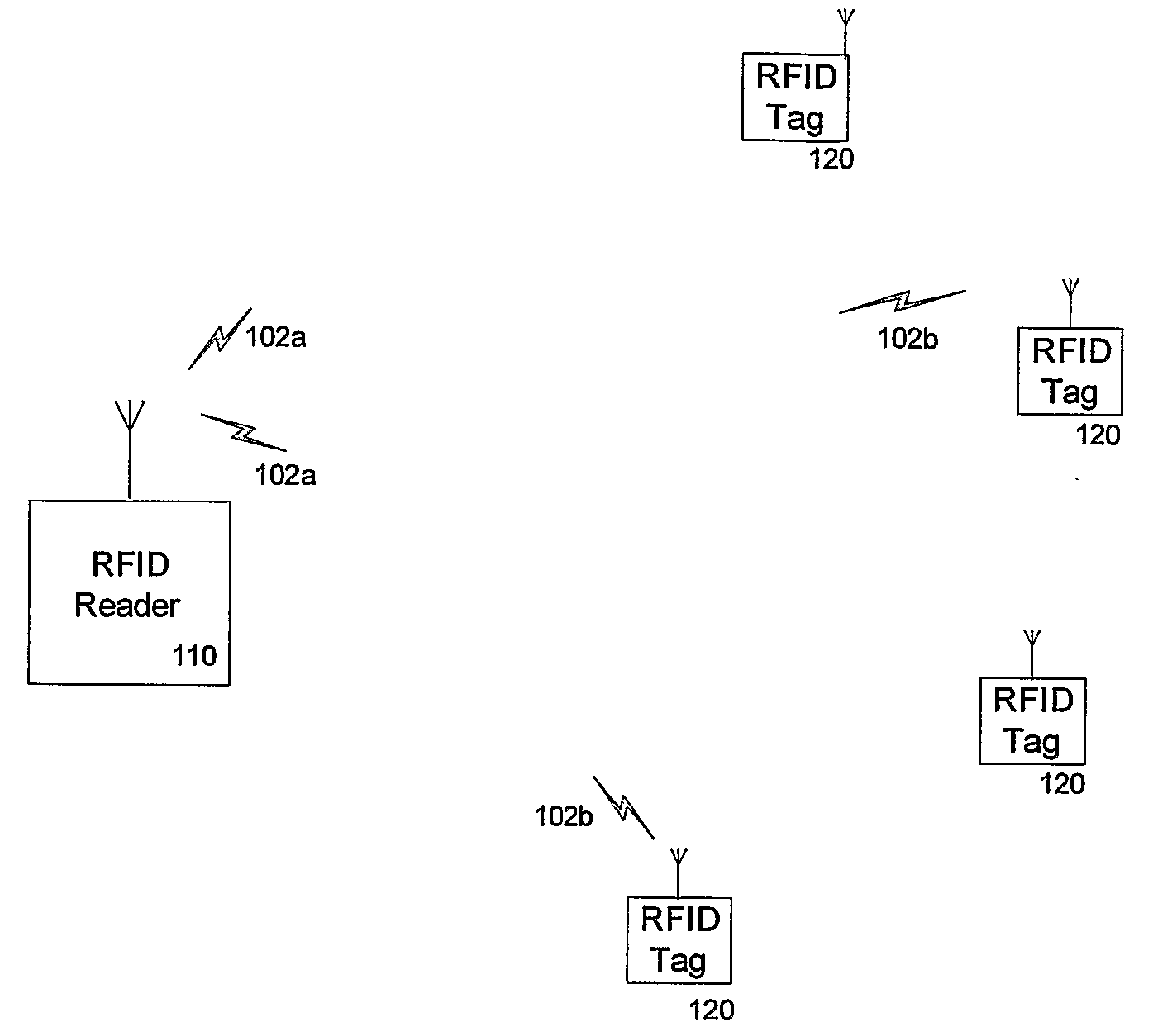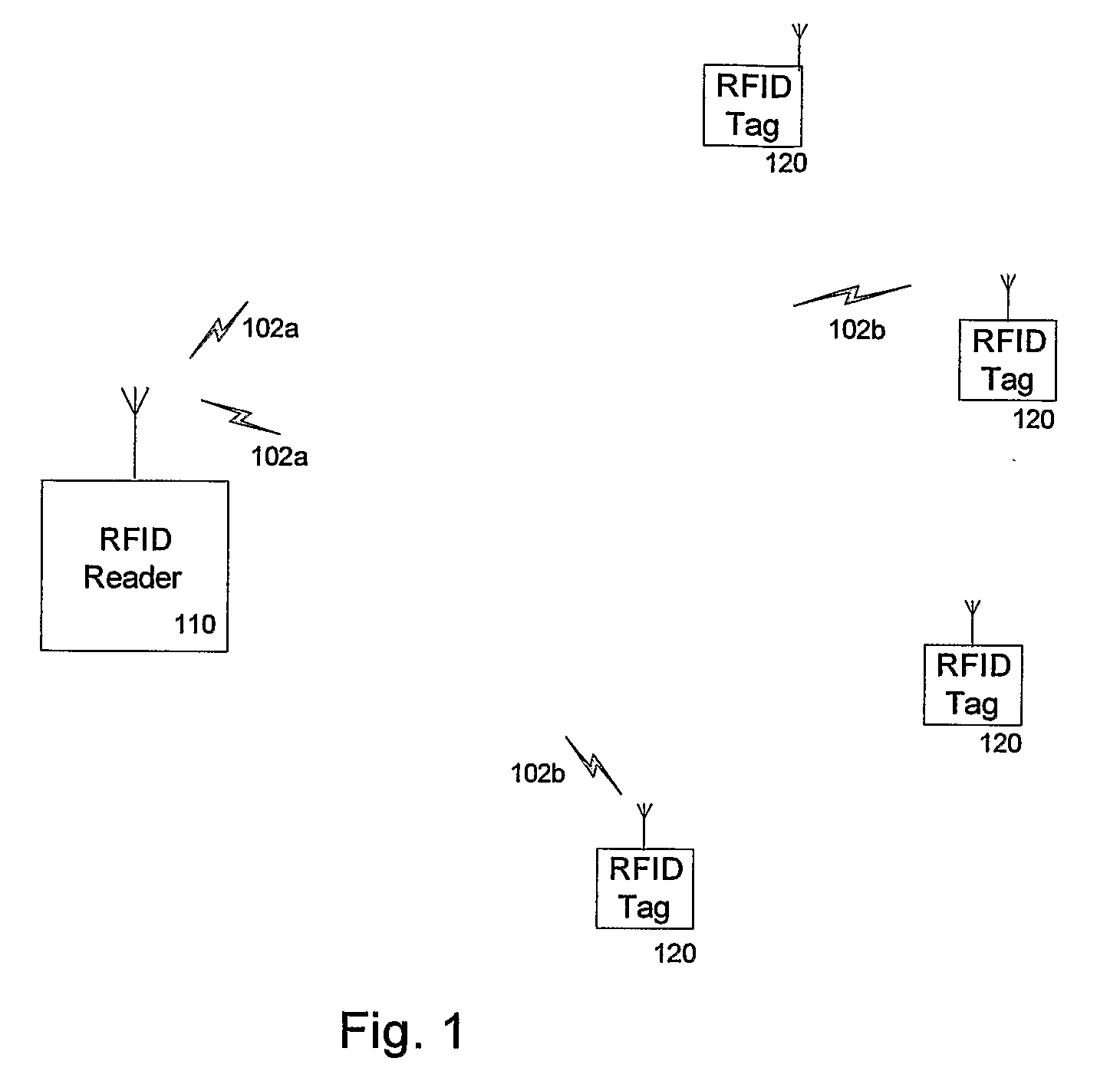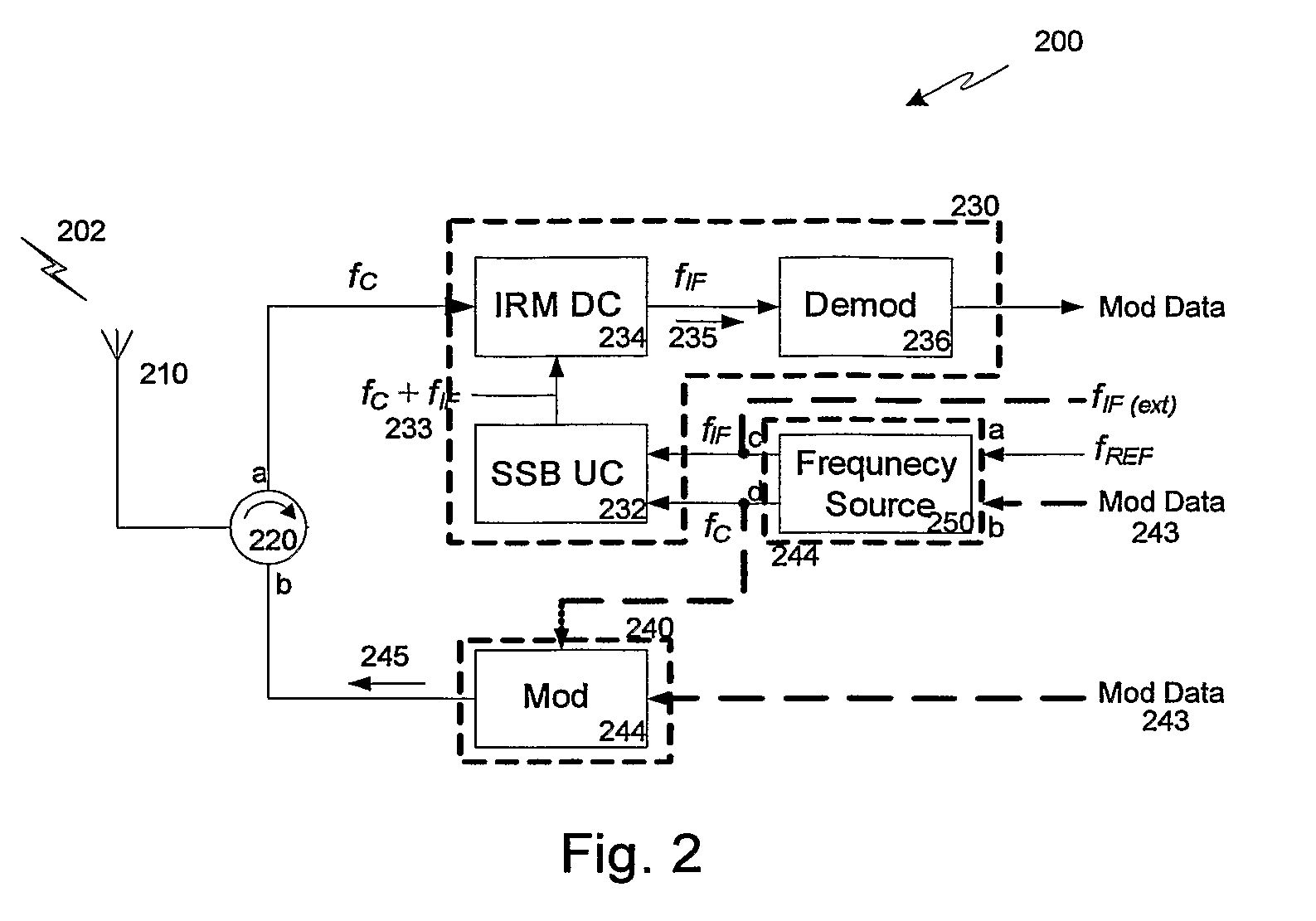Architecture For Rfid Tag Reader/Writer
a technology of tag reader and tag writer, which is applied in the direction of transmission, subscriber station connection selection arrangement, indirect connection of subscriber, etc., can solve the problems of requiring an additional frequency synthesizer, requiring two frequency synthesizers, and significant expense, so as to achieve less power, less ic real estate, and good image rejection
- Summary
- Abstract
- Description
- Claims
- Application Information
AI Technical Summary
Benefits of technology
Problems solved by technology
Method used
Image
Examples
Embodiment Construction
[0013]FIG. 2 illustrates a block diagram of a RFID transceiver in accordance with one embodiment of the present invention. The transceiver 200 includes an antenna 210, a circulator 220, an RFID receiving channel 230, an RFID transmitting channel 240, and a common frequency source 250. The RFID receiving channel 230 includes a single sideband upconverting mixer 232, an image rejection down converting mixer 234, and a demodulator 236. The RFID transmitting channel 240 includes a modulator 244, which in a particular embodiment (indicated by the dashed lines) includes the common frequency source.
[0014]The antenna 210 is operable to transmit RFID signal 202, which may be in the form of amplitude shift-keyed (ASK), on-off keyed (OOK), frequency shift-keyed (FSK) formatted signals and to receive RFID signal 202, which may be in the form of amplitude shift-keyed (ASK), on-off keyed (OOK), frequency shift-keyed (FSK) or phase shift-keyed (PSK) formatted signals. Circulator 220 provides isola...
PUM
 Login to View More
Login to View More Abstract
Description
Claims
Application Information
 Login to View More
Login to View More - R&D
- Intellectual Property
- Life Sciences
- Materials
- Tech Scout
- Unparalleled Data Quality
- Higher Quality Content
- 60% Fewer Hallucinations
Browse by: Latest US Patents, China's latest patents, Technical Efficacy Thesaurus, Application Domain, Technology Topic, Popular Technical Reports.
© 2025 PatSnap. All rights reserved.Legal|Privacy policy|Modern Slavery Act Transparency Statement|Sitemap|About US| Contact US: help@patsnap.com



